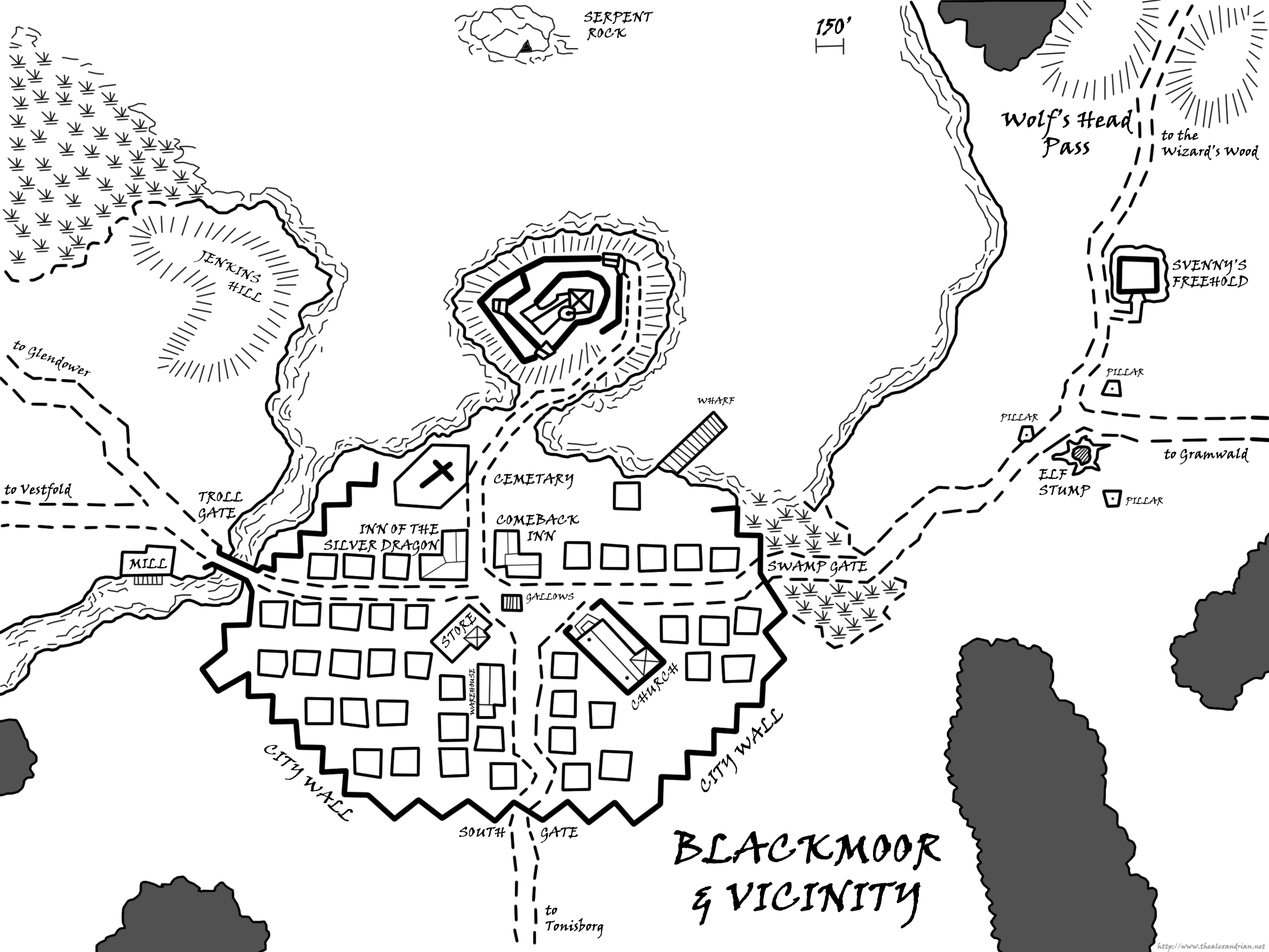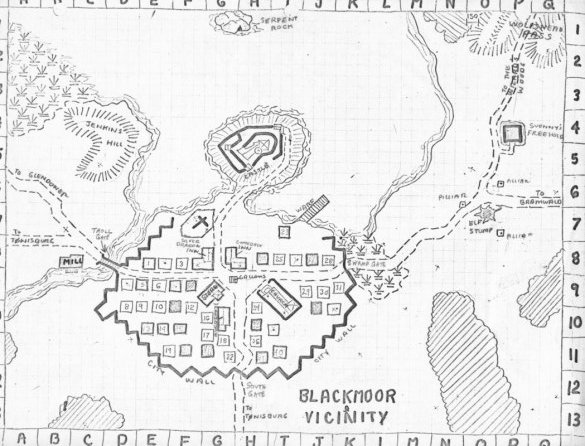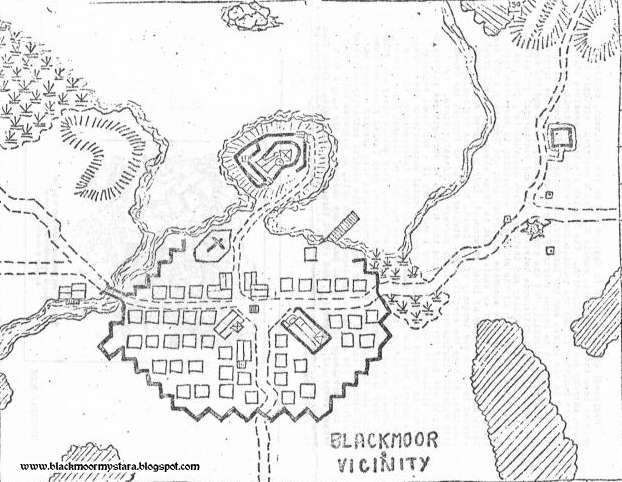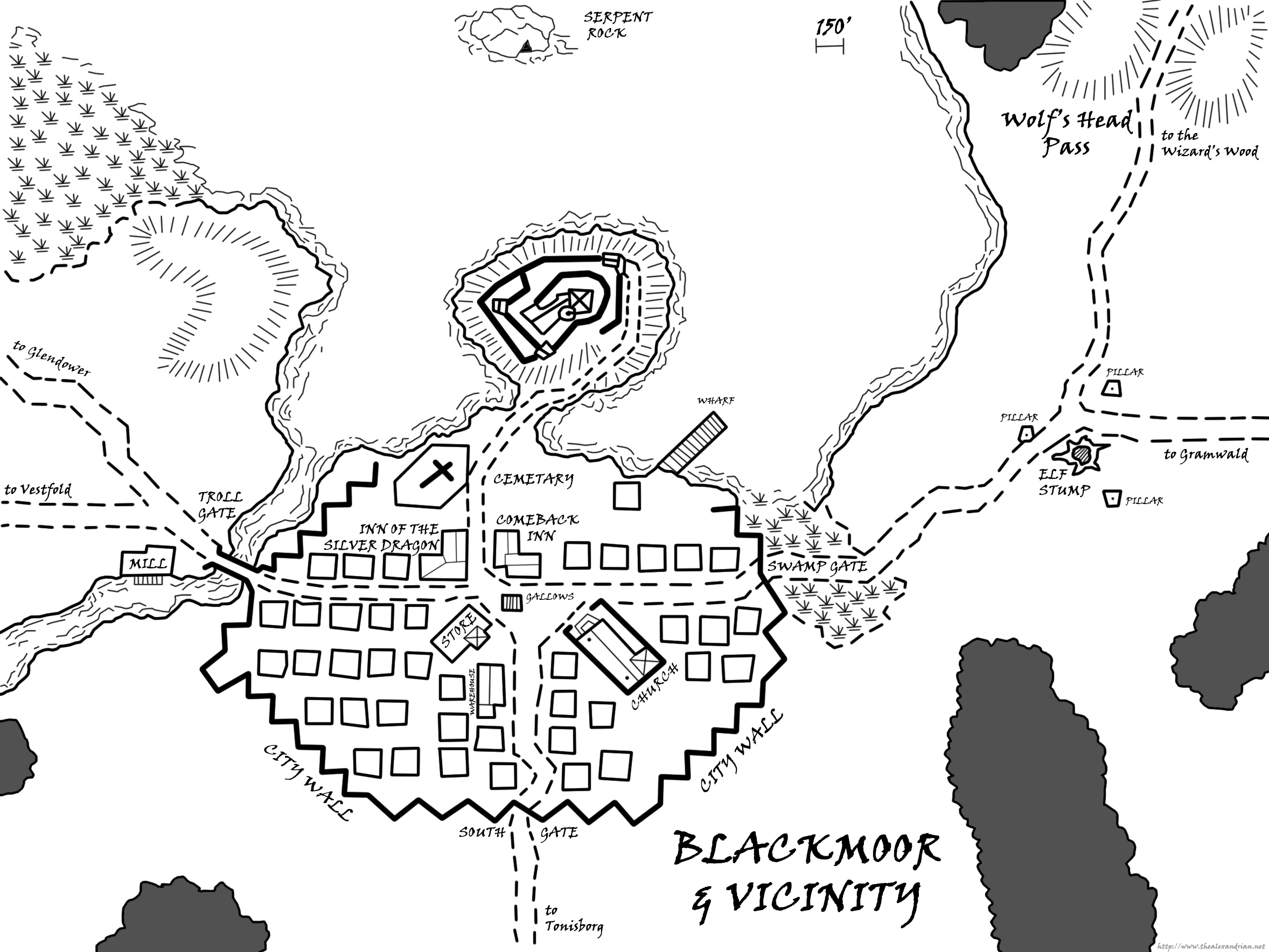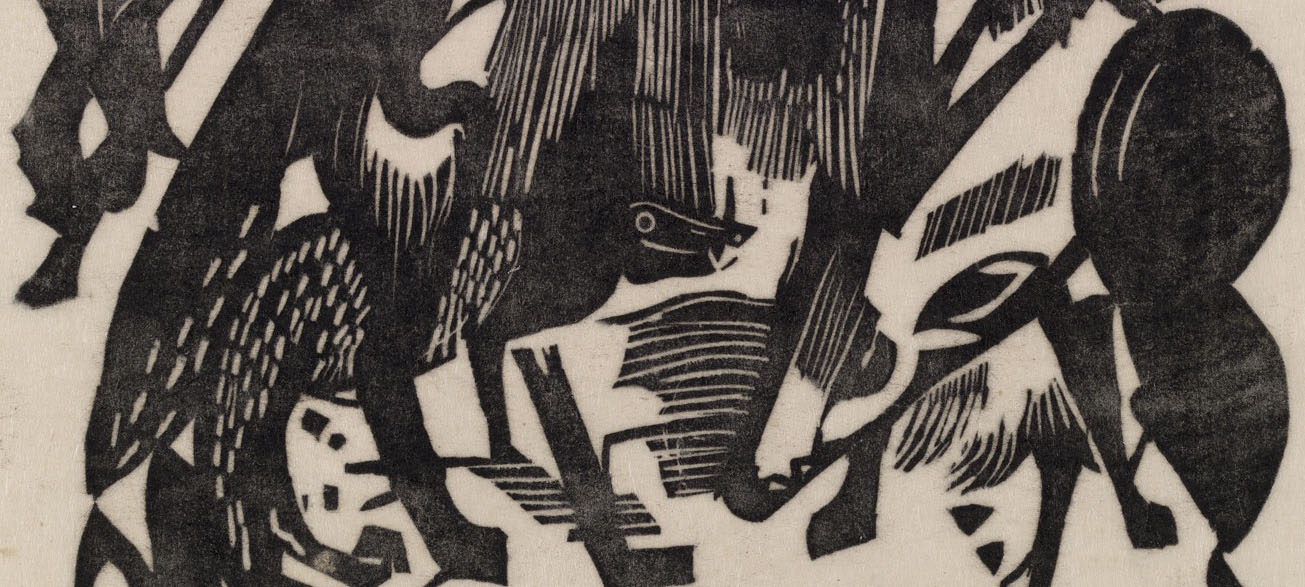Session 17B: The Coming of Shilukar
As they reached the intersection, Agnarr tried to bring his sword down upon the first of them. But before he could, the gray goblin darted to one side and used its scythe-like claws to gash the flesh of the wall. On the other side of the hall, a second goblin did the same. A thick, arterial spray of viscous blood gushed forth. The floor suddenly became slick and treacherous. Agnarr and Tor both fell, with Tor toppling backwards into Dominic and carrying him to the ground as well.
One of the cool things about D&D fantasy is that the creatures you fight are often packages of unique abilities which makes an encounter with, say, a basilisk completely different from an encounter with a hydra. This creates innate variation in tactical challenges, preventing the bevy of combat encounters that usually make up the core of a D&D scenario from becoming rote or repetitive with an absolutely minimal effort from the DM.

With that being said, our familiarity with this form factor – unique abilities being delivered by packaging them into monster stat blocks – can blind us to other vectors for delivering those encounter-defining abilities.
In other words, if you’re thinking, “I really want the PCs to fight some monsters who can do X,” it might be worthwhile to think of ways that the monsters can do that without innately possessing those abilities.
This is useful in scenarios where the PCs are facing a large number of the same type of monster over and over again. (“Oh. Look. It’s Goblin #789.”) By allowing the monster to utilize an externalized ability, you can introduce the same variety that you would normally get from varying the creature types involved. (And, yes, you could just mix in other creature types into the encounter mix, but that’s not always logical in the context of a given scenario.)
Agnarr swung his blade high and cut down into the pulpy flesh. And from the wound a spray of blood burst forth, coating the walls and floor… and Shilukar.
An even cooler feature, as seen in this week’s campaign journal, is that tactical interest which has been externalized can be seized by the PCs and turned to their advantage, encouraging creative and memorable play.
In pursuing the image of a spray of blood which works in a fashion similar to a grease spell I could have very easily made that an ability inherent to a creature. (And, in fact, I would later do so in the form of the blood terrors.) But because the goblins triggered this ability by slashing the walls, it allowed the PCs to use the same tactic to their own advantage.
Externalized tactical interest can be environmental (like the walls that can be slashed to create blood sprays). An even more straightforward variety is simply equipment: The goblin with a magic item that lets them throw a lightning bolt or grow to giant size or create a caustic cloud at the head height of a human (but which Small creatures can easily run around underneath) is distinct from a typical goblin. And just as the wall can be slashed, so the enemy’s equipment can be looted and turned to the PCs’ use (creating long-term tactical adjustments).
EXTERNALIZED TACTICAL INTEREST AS DYNAMIC TERRAIN
Back in July I talked about the importance of dynamic terrain / tactically rich environments. Some may perceive a contradiction between my argument in that essay that “you don’t need to drape mechanics over it” in order to create dynamic terrain and this essay in which I’m basically saying, “Include a wall that can be slashed to mimic the effects of a grease spell.”
The difference is one of focus, intent, and utility.
There is a difference between saying, “There is a staircase here,” and saying, “The banister is here so that characters can slide down it, so I’ve applied the Slideable tag to it so that they can do so.” The former is a statement of existence; the latter features not only what I would describe as wasted prep in the form of contingency planning, but also an overly complicated mechanical framework for interacting with the environment.
When I say, “There is a wall which gouts blood when its damaged,” the statement I’m making is, in my opinion, more similar to the former statement than the latter. Yes, there is a mechanical component. But the mechanical component exists because the properties of the wall are a unique ability. It’s the same way that punching someone with a fist is generally handled with a general purpose mechanic rather than giving individual creatures a “Punching” tag.
The distinction may be a subtle one, but I think an important one. Note, for example, that I did not specifically anticipate (or even attempt to anticipate) that the wall’s ability to spray blood would reveal the presence of an invisible adversary. That’s because my focus was on modeling the wall’s existence, not its utility.
By way of contrast, note how saying “this Banister is here so that characters can slide down it” is a statement which ideologically suggests one needs to predetermine and list all the other potential functions to which the banister might be put. (For example, “characters can seek cover behind the banister.”) Whereas, the statement “there is a staircase here” doesn’t waste any time making suppositions about how it might be used during play (even though we are immediately cognizant of the fact that it can be walked up and down).






